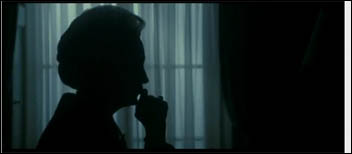Film review
The Iron Lady in meltdown
Derek McMillan reviews the film The Iron Lady

Thatcher: The Iron Lady, still from movie
The widely hyped film is not intended to cover all the political events of former prime minister Margaret Thatcher’s life. It deals with the political issues through the incoherent rambling recollections of an old and demented Thatcher after the meltdown of the ‘iron lady’.
Of course a first-class actor like Meryl Streep can make the most unpromising of villains appear to have a sympathetic side. As well as eliciting sympathy for Thatcher’s declining years and mental instability, she also portrays her as a “woman in a man’s world” striking a blow for women!
However there are many women – miners’ wives, Argentine widows of war, the millions who stood up against the poll tax (and I could go on!) – who are not at all sure Thatcher was a crusader for women’s rights. It is their story which is excluded here. She was a crusader for Margaret Hilda Thatcher. And if that meant trampling on men or women she was indifferent.

Miners’ strike: The Iron Lady, still from movie
And what about Thatcher’s less likeable abiding hatred of the working class – the miners, the poll tax protesters and practically the whole city of Liverpool? That seems to have remained on the cutting room floor. She once told a friend only to hire a servant “who had patches on the knees of his trousers.” Thatcher liked the working classes well enough, in their place – down on their knees!
And another area missing from the film – apart from the political omissions whose name is legion – is Thatcher’s use of racism for electoral advantage. Echoing Enoch Powell she ranted about Britain being ‘swamped by people of a different culture’. That is on the cutting room floor too.
Jim Broadbent’s comic relief as the ghost of Denis Thatcher is a masterpiece. The only thing missing is the other side of this apparently jovial buffoon. Denis Thatcher made sure his Downing Street connection ensured that his business interests came to no harm – on one occasion complaining to Nicholas Edwards, the Secretary of State for Wales using Downing Street notepaper just to underline the connection.
One thing Meryl Streep did get off pat was Thatcher’s style of delivery – one which makes sure nobody gets a word in edgeways. This applied most of all to her cabinet colleagues or “bastards” as she used to call them. And there is a chilling sense in the scenes of the Falklands conflict, when Thatcher orders the sinking of the Belgrano, that this was a woman with a finger on the nuclear trigger. It is a wonder any of us lived to tell the tale.
Thatcher is famous but her claim to fame is that she led one of the most hated governments of all time, certainly of the post-war period. Even that dubious honour is likely to be taken away from her by the Con-Dem coalition.
The film intercuts her 1979 quotation from St Francis of Assisi: “Where there is discord may we bring harmony” with scenes from the miners’ strike and the anti-poll tax movement showing Thatcher’s carte blanche to the police to use force.
That is as good as it gets for an obituary of a figure who came to symbolise the Conservatives’ heartless attitude. They don’t talk about class war. They are too busy waging it.
Hollywood gloss
The Iron Lady glosses over the brutality of Thatcher and her wealthy, capitalist government. Some members of today’s coalition may hope that the film shows Thatcher – and hence her Tory successors – as heroic figures. The first signs are not positive for the Thatcher brigade.
The Guardian did a straw poll asking its readers to say whether they admired the real Iron Lady, only 12.1% said yes and 87.9% said no. Admittedly they would have got a more sympathetic hearing from the likes of the Daily Mail but any attempt to make Thatcher into a latter-day saint and feminist icon will be laughed out of court.






